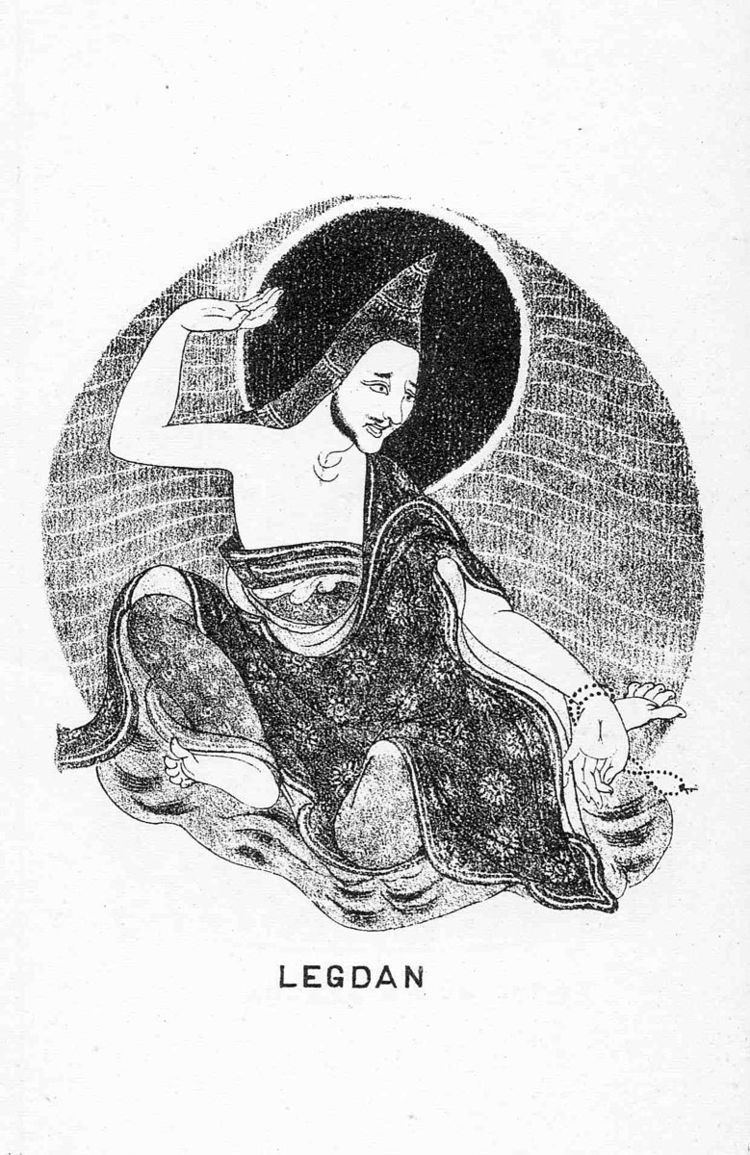Name Bhāviveka Bhāviveka | ||
 | ||
Svatantrika | Wikipedia audio article
Bhāviveka, also called Bhavya or Bhāvaviveka (traditional Chinese: 清辯; ; pinyin: Qīngbiàn; Wylie: slob dpon bha bya, skal ldan, legs ldan, c. 500 – c. 578) was a sixth century Madhyamaka Buddhist. In Tibetan Buddhism Bhāviveka is regarded as the founder of the Svātantrika tradition of the Mādhyamaka school of Buddhism, which is seen as antagonistic to Prāsaṅgika Madhyamaka.
Contents
- Svatantrika Wikipedia audio article
- Biography
- Svtantrika school
- Role of reasoning
- Panchen Lama lineage
- Madhyamakahdaya karika and its autocommentary the Tarkajvala
- Prajpradpa or Janndeepa
- Wisdom Lamp Jndpa
- References
Biography

The life details of Bhaviveka are unclear. He likely lived in early 6th century north India (c. 500-560 CE). This, states Malcolm Eckel, was a period of "unusual creativity and ferment in the history of Indian Buddhist philosophy", when the Mahayana Buddhism movement was emerging as a "vigorous and self-conscious intellectual force" while early Buddhist traditions from the eighteen (Nikaya) schools opposed this Mahayana movement.
Bhaviveka is notable in the Indian tradition for his inclusivist comments. He equated the Buddha's Dharma body with the Upanishadic concept of ultimate reality called Brahman, but this view does not imply that he was a Hindu or that he viewed Buddhism and Hinduism to be the same. In his writings he comments on early Vedanta, and also addresses Hinayana (Theravada) accusations that Mahayana Buddhists are "crypto-Vedantins".
Svātantrika school
Bhāviveka is generally considered to be the founder of the Svatantrika tradition within Buddhism.
Tibetan doxographers divided the Madhyamaka philosophy of Nāgārjuna into Svātantrika ('svatantra': autonomous) and Prāsaṅgika ('prasaṅga': consequence). This manner of division has been retroactively applied in Tibetan monasteries, and commonly found in modern secondary literature on Madhyamaka. However, according to Dreyfus and McClintock, such a classification is problematic and was not used in India, where instead the "Svatantrika and Prasangika" schools were camped together then contrasted with "Santaraksita and Kamalasila" (Yogacara) schools of Madhyamaka Buddhism. The former accepted "external objects exist", while the latter camp accepted "external objects do not exist". The Svatantrika versus Prasangika sub-schools may have been a 11th/12th century innovativeness of the Tibetan translator "Pa tshab nyi ma grags" while he was translating a Sanskrit text by Candrakirti into Tibetan.
According to Emmanuel this distinction has been discussed with the Prasangika school of Buddhapalita (470–550 CE) and Candrakirti (600–650 CE), and by 11th-century Buddhist scholars.
Role of reasoning
In the Svātantrika tradition reasoning is used to establish that phenomena have no self-nature, and further arguments to establish that the true nature of all phenomena is emptiness. This school differs from the predominant Prasaṅgika tradition in that the latter refrain from making any assertions whatsoever about the true nature of phenomena.
The Padmakara Translation Group (2005: p. 386) convey a respected philosophical legacy, a dialectical chicane inaugurated by Bhāviveka:
Bhavya holds that the consequential arguments of Buddhapalita are not on the same footing as those of Nagarjuna. In both cases, the consequences imply negations that could theoretically be formulated as positive (syllogistic) arguments. The difference between them is that, given what is known to be Nagarjuna's intention (the negation of all four positions of the tetralemma), his negations are to be understood as nonimplicative. But such a concession is not to be granted to the commentator, whose task is to render explicit to the fullest extent the obscurities of the commented text. If the commentator uses consequences (unaccompanied by any positive and clarificatory statement), the resulting negations cannot automatically be regarded as nonimplicative. On the contrary, they are implicative and therefore undesirable in the Madhyamaka context...It is worth noting that it is in Bhavya that the important distinction between implicative and nonimplicative negations first appears.
In the above quotation, "tetralemma" should be understood to refer to the catuṣkoṭi. "Nonimplicative negation" (Tibetan: མེད་དགག, Wylie: med dgag, Sanskrit: niṣedha) may also be rendered as "existential negation". "Implicative negative" (Tibetan: མ་ཡིན་དགག, Wylie: ma yin dgag; Sanskrit: paryudāsa) may also be rendered "predicative negation".
Panchen Lama lineage
In the lineage of the Panchen Lamas of Tibet there were four Indian and three Tibetan mindstream tulku of Amitābha before Khedrup Gelek Pelzang, 1st Panchen Lama. The lineage starts with Subhuti, one of the original disciples of Gautama Buddha. Bhāviveka was the third Indian tulku in this line.
Madhyamakahṛdaya-karika and its autocommentary, the Tarkajvala
Bhavya wrote an independent work on the Madhyamaka entitled the Madhyamakahrdaya-karika which Bhavya in turn wrote an autocommentary upon entitled the Tarkajvala (Blaze of Reasoning).
His text Madhyamakahrdayakārikā and his commentary Tarkajvālā therein, states Malcolm Eckel, provide a "unique and authoritative account of the intellectual differences that stirred the Buddhist community in this creative period".
Prajñāpradīpa (or Janāndeepa)
The Prajñāpradīpa (Wylie: shes rab sgron ma; or shes rab sgron me) is Bhāviveka's commentary upon Nagarjuna's Mūlamadhyamakakārikā. The Sanskrit is no longer extant (except for a few embedded quotations in the Prasannapadā, Candrakīrti's commentary of the Mūlamadhyamakakārikā and critique of the Prajñāpradīpa) but according to Ames (1993: p. 211) is available in both an excellent Tibetan translation, rendered by Jñānagarbha and Cog ro Klu'i rgyal mtshan (Wylie) in the early 9th century. Ames (1993: p. 211) also conveyed that the Chinese translation is poor, where the inference of inferiority was drawn from the work of Kajiyama (1963: p. 39). The Sanskrit name has been reconstructed as either Prajñāpradīpa or Janāndeepa (where Janāndeepa may or may not be a Prakrit corruption or a poor inverse-translation, for example).
According to Ames (1993: p. 210), Bhāviveka was one of the first Buddhist logicians to employ the "formal syllogism" (Wylie: sbyor ba'i tshig, Sanskrit: prayogavākya) of Indian logic in expounding the Mādhyamaka which he employed to considerable effect in his commentary to Nāgārjuna's Mūlamadhyamakakārikā, entitled the Prajñāpradīpa.
Wisdom Lamp (Jñāndīpa)
After the death of Buddhapālita (470–550), Bhāviveka refuted his views by writing a commentary on the Root Wisdom called Wisdom Lamp (Jñāndīpa) relying on Nāgārjuna's teachings. This text laid the foundations for the Svātantrika school.
